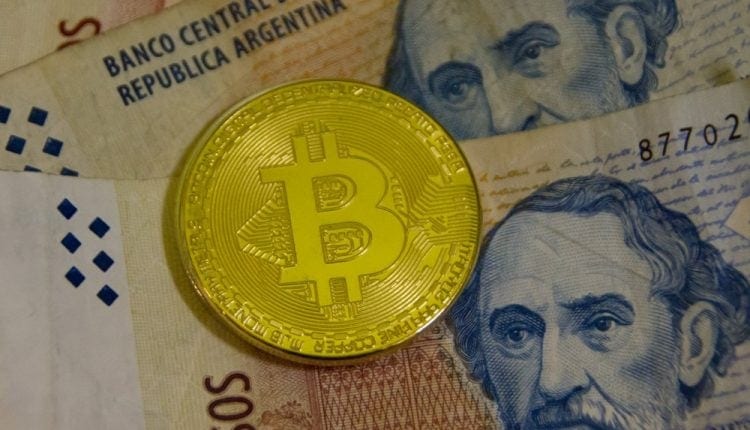For more than ten years, the debate about the digital currency has not ceased. What are cryptocurrencies? Money of the future or a new financial pyramid? The Latin American region has been a leader in the adoption of cryptocurrencies over the past couple of years. Economic instability forces the population to use Bitcoin and other virtual money. Despite the fact that Turkey took first place in the adoption of cryptocurrencies, Latin American countries continue to remain at the top of the ranking. How do cryptocurrencies intend to “capture” the Latin American market?
What cryptocurrency appeared first on our planet? Today it is difficult to find a person who does not know the answer to this question: of course, this is Bitcoin. Cryptography for the purpose of confidential payments began to be used since 1990 through the “DigiCash” system, developed by David Choma, whose company went bankrupt in 1998. However, its payment system was centralized, and for the first time the term “cryptocurrency” began to be used after the appearance of the peer-to-peer payment system “Bitcoin”, which was developed in 2009 by a person or group of persons under the pseudonym Satoshi Nakamoto, using hashing “SHA-256” and the proof-of-work system. The mysterious Satoshi Nakamoto published his investigation almost 11 years ago – October 31, 2008, however, the first bitcoin was mined on January 3, 2009.
What about the other big coins? Few know about their age. The second oldest among the top 10 world cryptocurrencies is Litecoin. Litecoin was launched in October 2011. The youngest cryptocurrency among the top 10 is considered to be “Cardano”, its launch occurred two years ago, in September 2017. Over the 11 years of the digital industry, more than 2,500 new coins have already appeared on the market, and their number is growing every day. Perhaps everyone can create their own coin today, but only a few can make it successful and liquid in the world market.

In May of this year, “Heisenberg Capital” analysts released the results of a study in which they concluded that in the near future all types of cryptocurrencies will disappear and only Bitcoin will remain. According to experts, as Bitcoin approaches the $ 100,000 price tag, other types of coins will gradually die out. The statement of analysts of the famous company caused a new wave of controversy. So far, the first cryptocurrency has not been able to overcome the $ 10,000 mark, not to mention hundreds of thousands. However, the competition in the cryptocurrency market is really high, only projects that have real working tools and products can survive in the digital industry and even more so break into the top 100 rating of the largest digital coins in terms of capitalization.
Over the 11 years of the existence and spread of cryptocurrencies, disputes among financial analysts and governments have not subsided. The main topics of discussion are still the problems of cryptocurrency regulation, their circulation within countries, and most importantly – their vague future. While some states are “struggling” over the development of loyal projects to digital coins, others are putting a “cross” on cryptocurrencies. The main reason for the prohibitions, of course, lies on the surface. Settlements in a currency other than the national one lead to a decrease in the country’s economic indicators, including one of the main ones – GDP. In addition, with the help of virtual money it is easier to “launder” assets or to export capital abroad. Also, banks will not receive their interest, and payment operators – a commission.
Currently, there are four countries in the world in which for any actions with cryptocurrency you can go to prison for several years at once: Nepal, Bolivia, Bangladesh, in 2018 Algeria joined them. In addition to countries where trade and storage of cryptocurrencies are completely prohibited, there are a number of states in the world with a national ban on certain types of transactions with digital assets, while the degree of regulation also varies greatly. The list of countries restricting operations with digital coins includes: China, India, Russia, Vietnam, Indonesia, Thailand, Kyrgyzstan, Ecuador, Iceland, Morocco and Malaysia.

With the exception of Bolivia, about sixty banks in Latin America are already using Bitcoins to make international payments, which, according to analysts, could significantly reduce costs for their customers and significantly speed up transaction time. One of the striking examples of its own cryptocurrency in the region is the Venezuelan “Petro”. On February 20, 2018, the Venezuelan government fulfilled its promise and began issuing the world’s first state-owned cryptocurrency, Petro. Unlike the vast majority of other cryptocurrencies, Venezuelan digital coins provide a real asset – 5 billion barrels of oil from the Ayacucho field in the oil belt of the Orinoco River. The cost of Petro corresponds to the price of one barrel of oil. However, according to financial analysts, the declarative nature of providing petro cryptocurrency with oil is still doubtful. Now Venezuela’s macroeconomic indicators are very low, and it is they who really “work” and allow making effective decisions only when they are not speculated, trying to pass off wishful thinking. However, the Petro cryptocurrency is used when purchasing gold from the Central Bank of Venezuela, in purchasing contracts of all state institutions, as well as in real estate transactions.
In mid-August, Brazil’s largest payment operator “Cielo” announced that a network of about 1.4 million payment terminals would soon support payments in Bitcoins and other cryptocurrencies. In a statement, company representatives noted that users will be able to make cryptocurrency payments using “QR codes”. In this case, the terminal will generate a code, and the user will be able to pay for the purchase with digital coins using a special application in the smartphone. To do this, the consumer will only need to create an account on the portals “Uzzo” or “Criptohub”. It is very significant that according to Paulo Caffarelli, Director General of the Brazilian company “Cielo”, partner banks support this initiative. In addition, Caffarelli drew attention to the fact that in October of this year, the “Cielo” can launch cryptocurrency payments that do not need terminals – the “QR code” will generate a special application on the seller’s smartphone.
To summarize, it is worth noting that despite the fact that virtual money is starting to gain popularity in Latin America, in general, the cryptocurrency sector is still very fragmented in the region. Each country acts as an “island” with its own rules, which often differ in neighboring countries. Thus, the variability of the legislative framework of Latin American states creates difficulties in the development of international services. According to experts, such problems are global, and it will take a long time to solve them.

